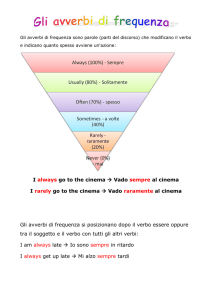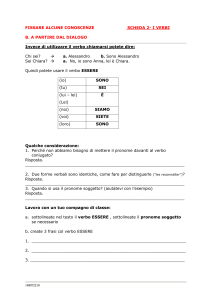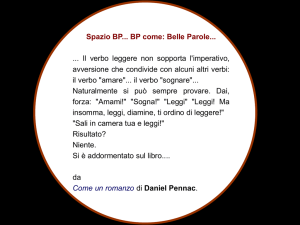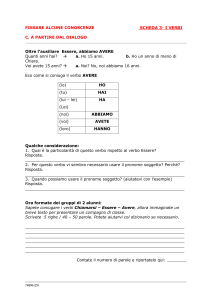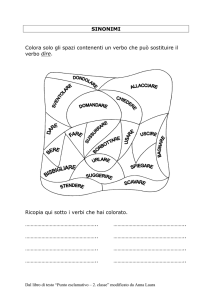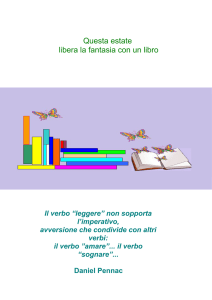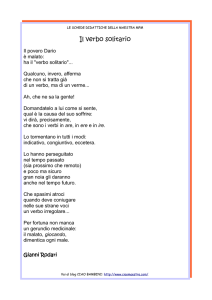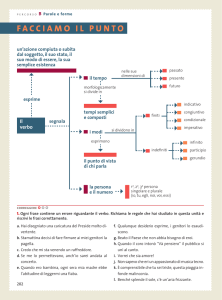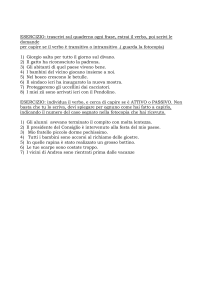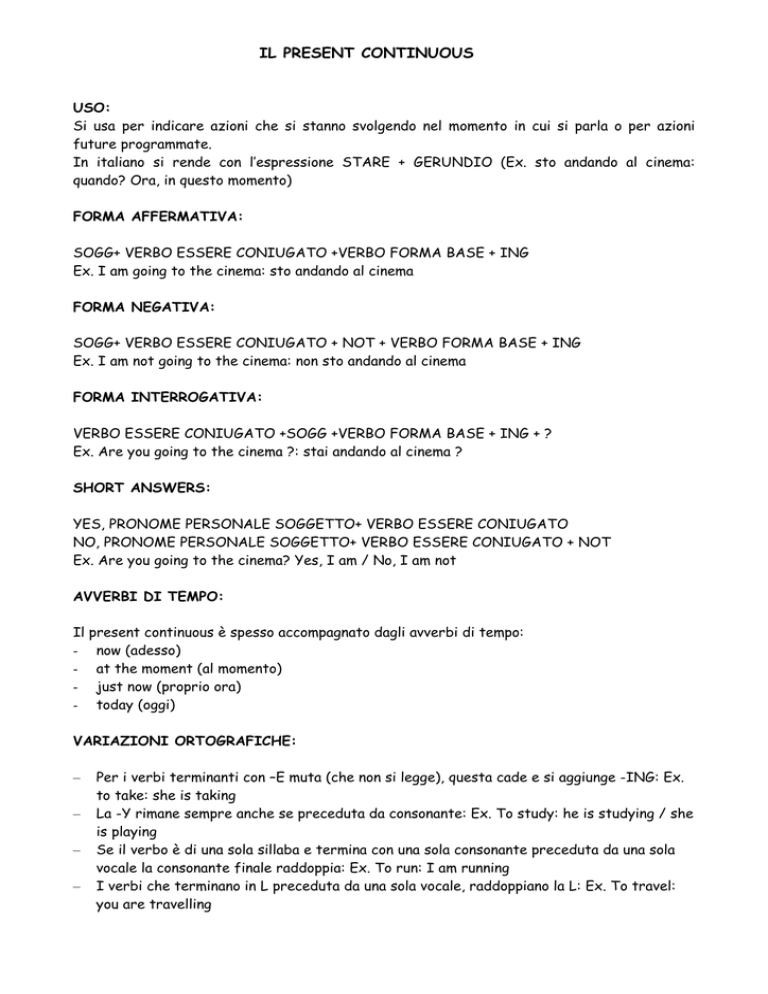
IL PRESENT CONTINUOUS
USO:
Si usa per indicare azioni che si stanno svolgendo nel momento in cui si parla o per azioni
future programmate.
In italiano si rende con l’espressione STARE + GERUNDIO (Ex. sto andando al cinema:
quando? Ora, in questo momento)
FORMA AFFERMATIVA:
SOGG+ VERBO ESSERE CONIUGATO +VERBO FORMA BASE + ING
Ex. I am going to the cinema: sto andando al cinema
FORMA NEGATIVA:
SOGG+ VERBO ESSERE CONIUGATO + NOT + VERBO FORMA BASE + ING
Ex. I am not going to the cinema: non sto andando al cinema
FORMA INTERROGATIVA:
VERBO ESSERE CONIUGATO +SOGG +VERBO FORMA BASE + ING + ?
Ex. Are you going to the cinema ?: stai andando al cinema ?
SHORT ANSWERS:
YES, PRONOME PERSONALE SOGGETTO+ VERBO ESSERE CONIUGATO
NO, PRONOME PERSONALE SOGGETTO+ VERBO ESSERE CONIUGATO + NOT
Ex. Are you going to the cinema? Yes, I am / No, I am not
AVVERBI DI TEMPO:
Il
-
present continuous è spesso accompagnato dagli avverbi di tempo:
now (adesso)
at the moment (al momento)
just now (proprio ora)
today (oggi)
VARIAZIONI ORTOGRAFICHE:
–
–
–
–
Per i verbi terminanti con –E muta (che non si legge), questa cade e si aggiunge -ING: Ex.
to take: she is taking
La -Y rimane sempre anche se preceduta da consonante: Ex. To study: he is studying / she
is playing
Se il verbo è di una sola sillaba e termina con una sola consonante preceduta da una sola
vocale la consonante finale raddoppia: Ex. To run: I am running
I verbi che terminano in L preceduta da una sola vocale, raddoppiano la L: Ex. To travel:
you are travelling

